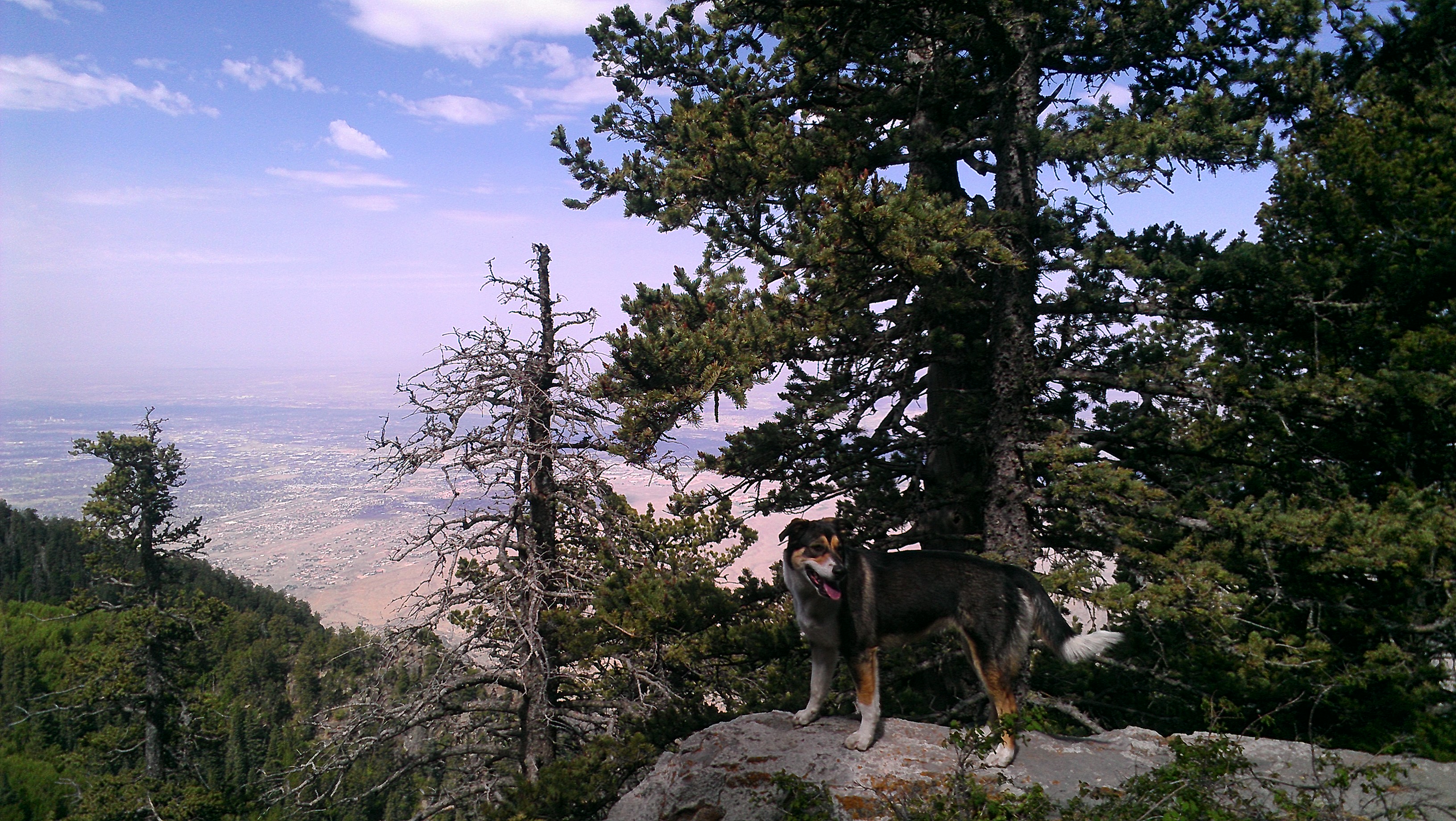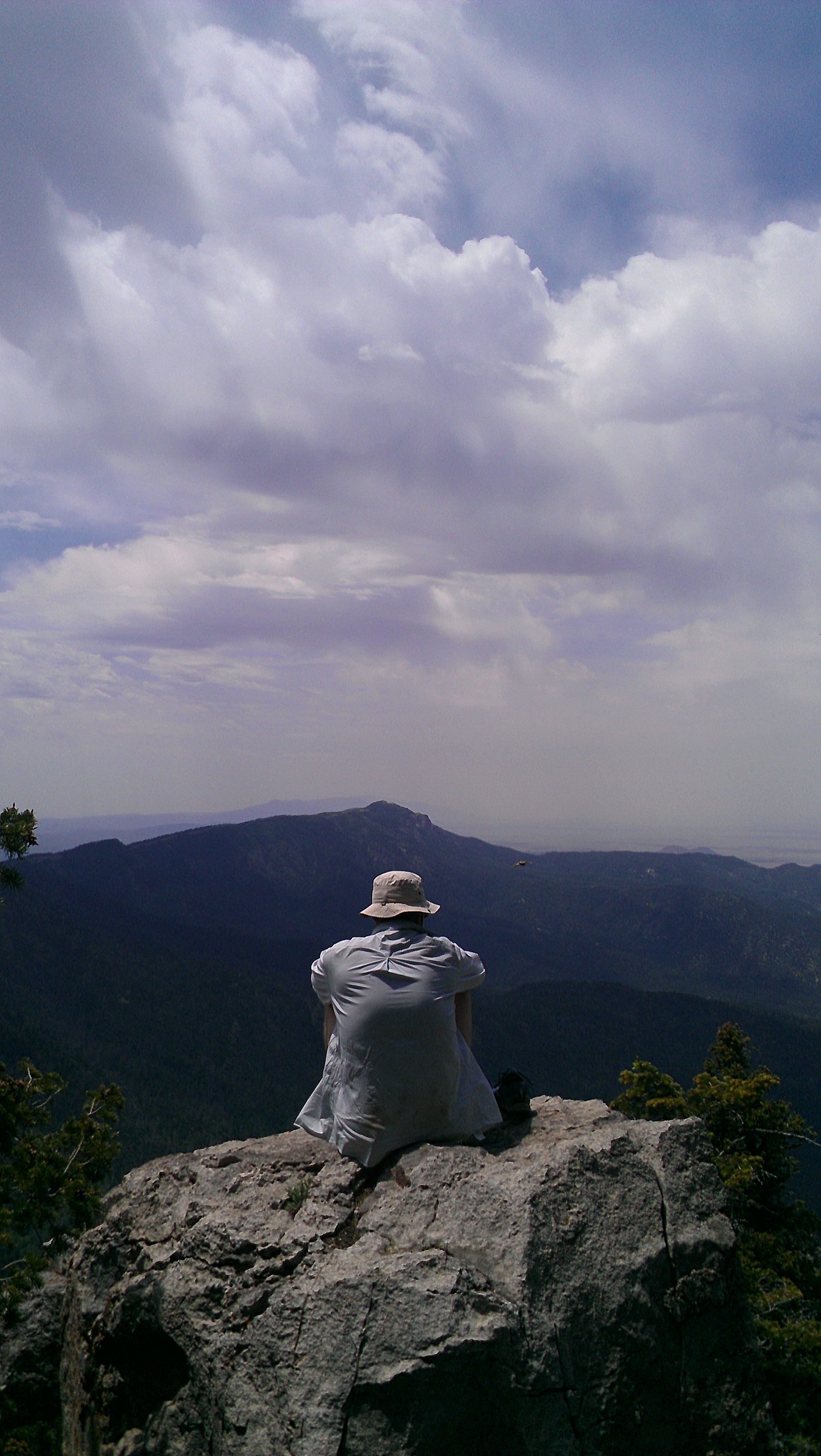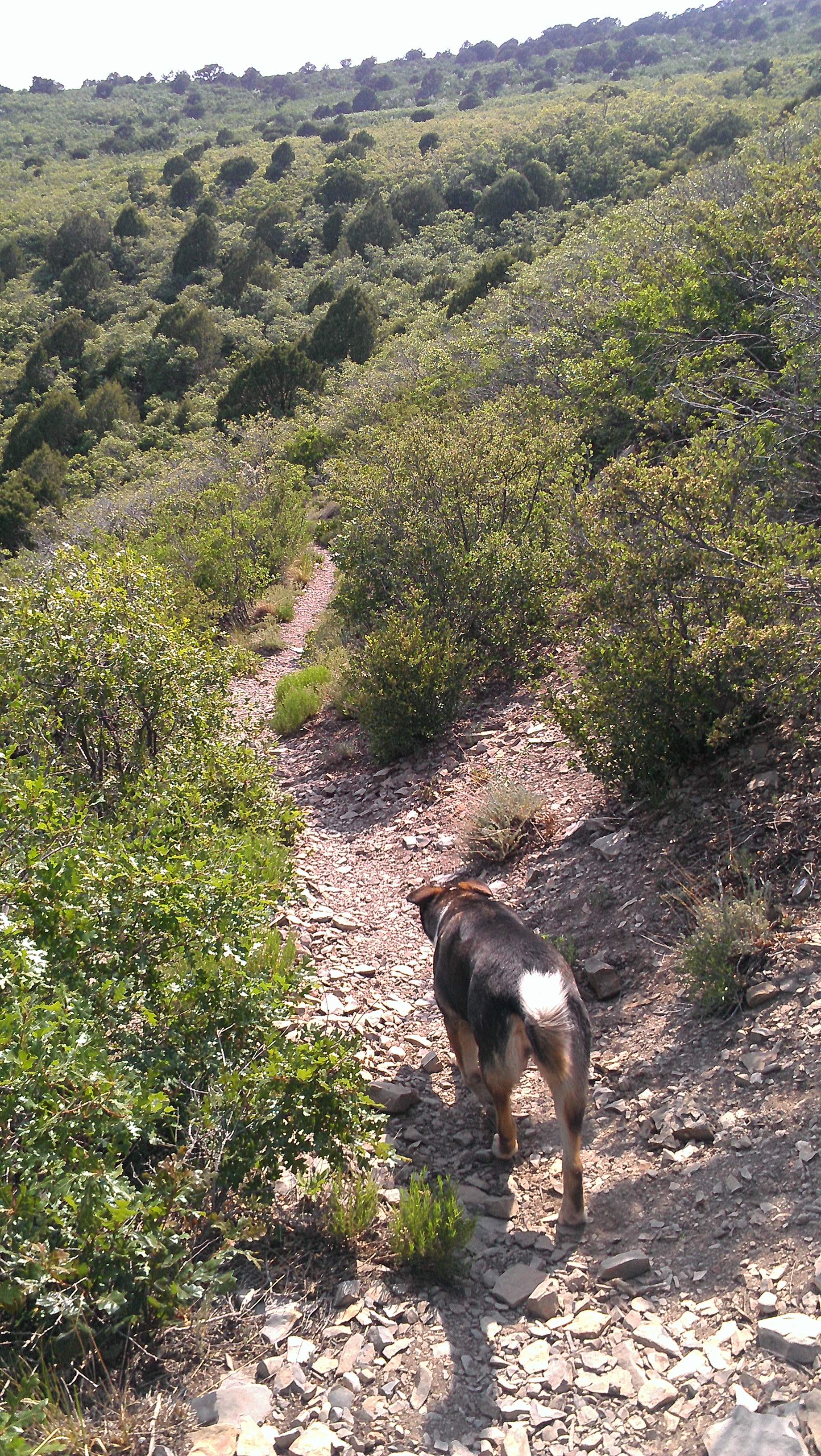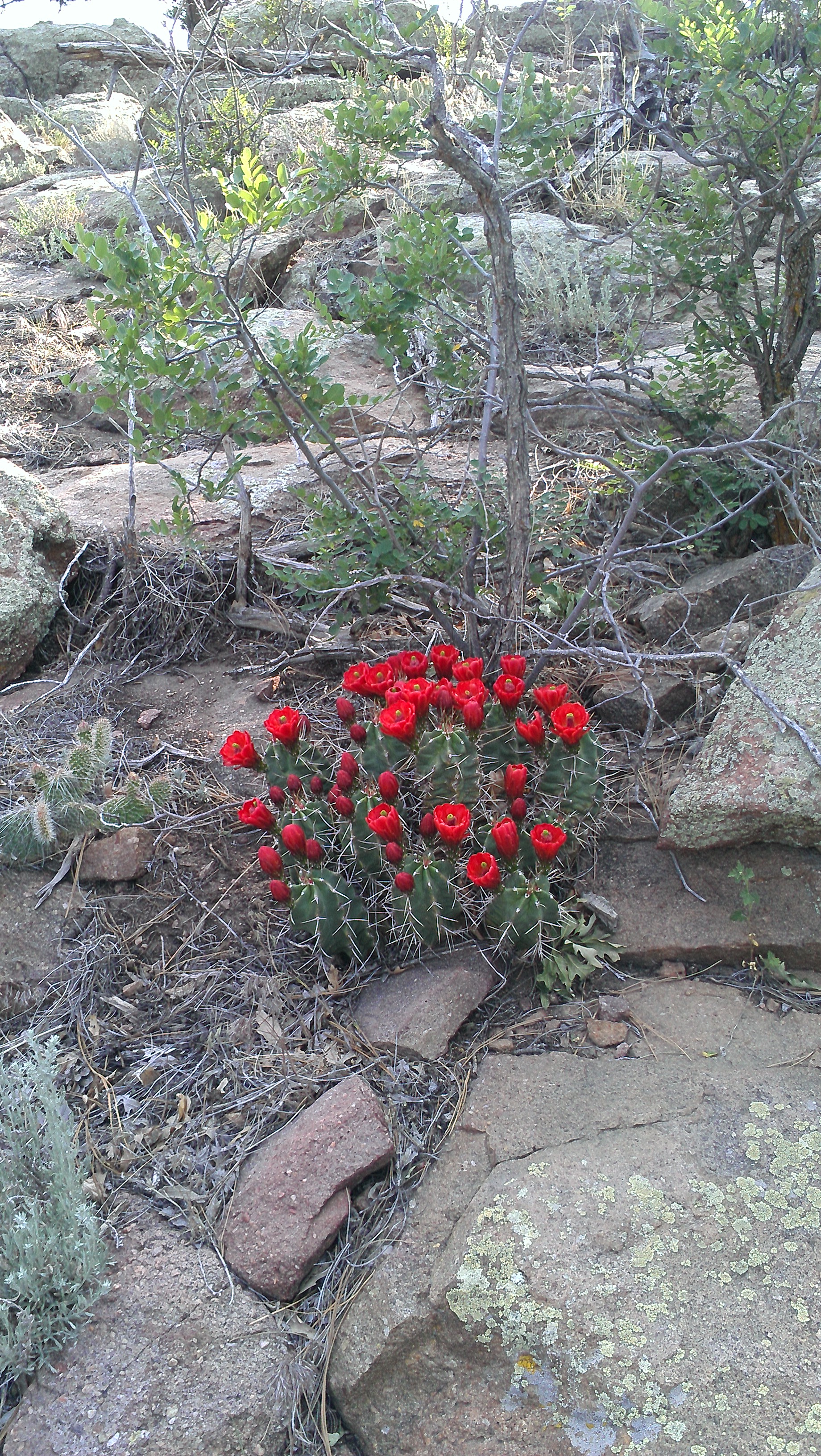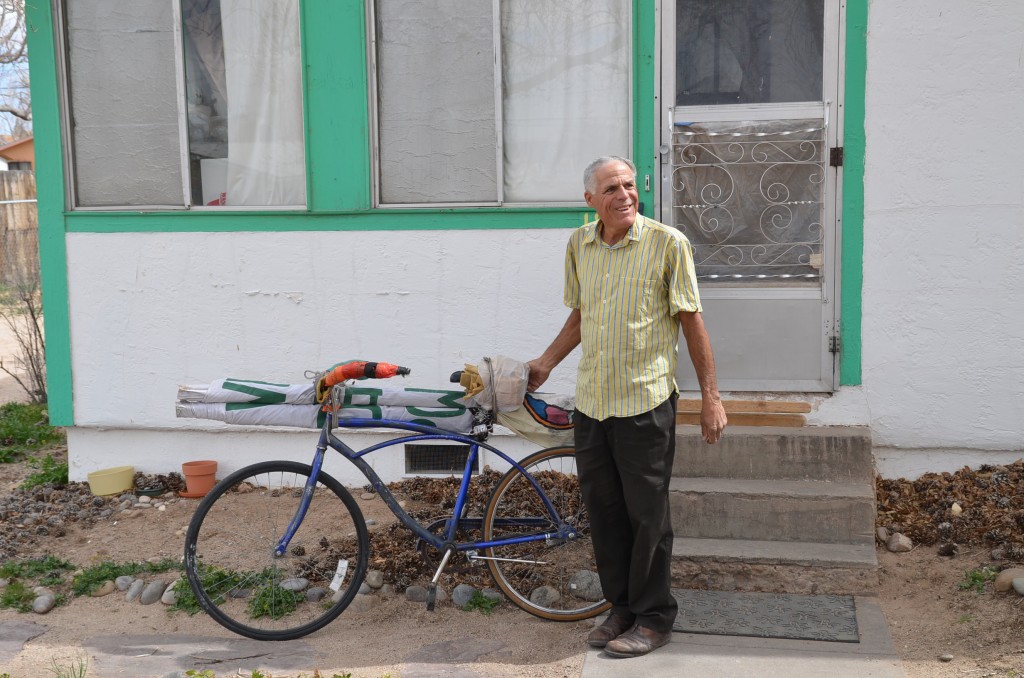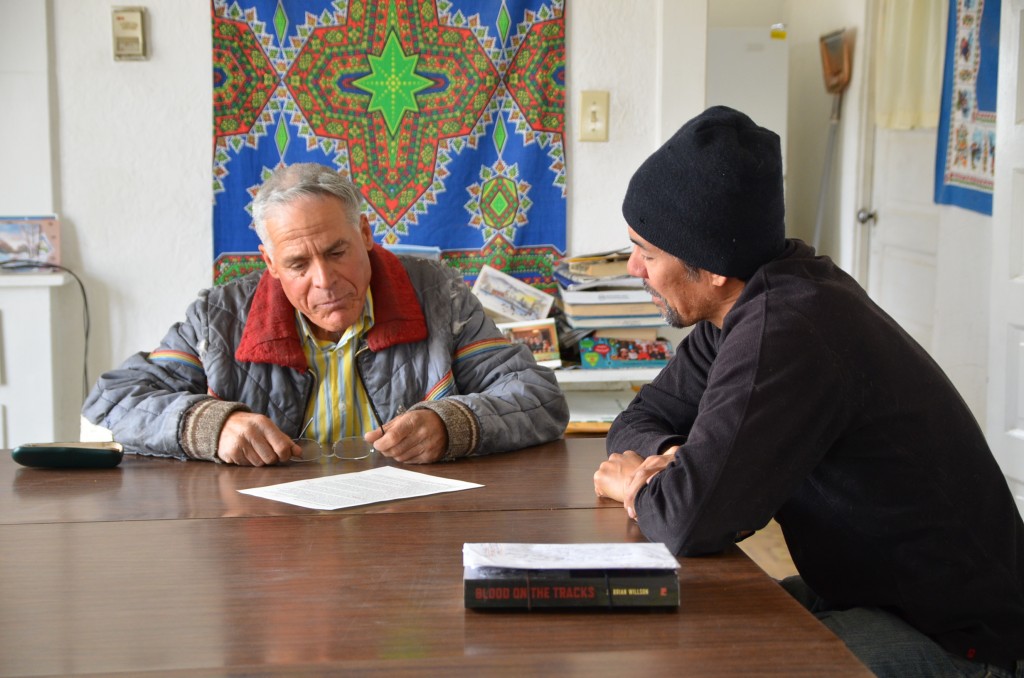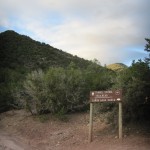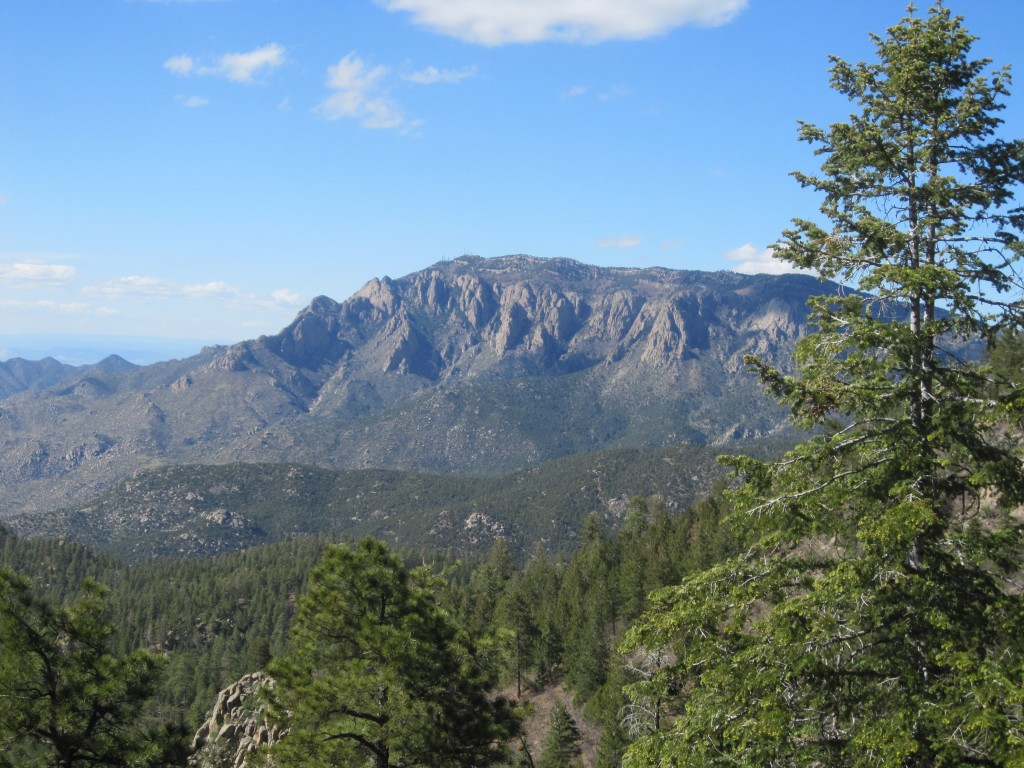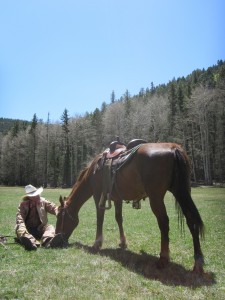You know things are getting bad when the Canadians (and others) start treating us like we treat foreigners. The other day I walked to my local pizza joint to grab a pie. On the patio, while waiting, I tried to ignore the loud conversation to my right between two men in their early 30s, one of whom was wearing white-framed sunglasses. I can ignore a loud conversation up to a certain point. Then I lose my shit. In this case, it didn’t help that there was a stream of curse words with emphasis on various forms of the word “fuck.” One look at the toddler in the high chair to my left and I steamed over to the table.
“Enough with the ‘fuckings’, I loud whispered. “If you have to talk like that go the fuck some other place. Leave.”
Before the two men had a chance to respond, the waitress materialized out of nowhere.
“You’re the one that needs to leave,” she said. “You can’t talk like that to my tables.”
I was a little stunned. I had rather thought of myself as a sort of patio hero. Plus, I was one of her “tables” as well, wasn’t I?
“But,” I stammered, “they were cursing, loudly! What about the children?” I gestured feebly to the toddler in the high chair.
This is when the bald Canadian with eyes a little too close together but otherwise handsome came to my rescue.
“No, he is right. We’ll keep it down.”
I went back to my table.
I found out he was Canadian after, when we had a brief conversation about the book I was reading. (Oh, global warming? Yeah, I read that years ago.) His companion, it turns out, was from Argentina. They made regular trips to Albuquerque to “work on their Spanish.”
Here they were, foreigners in the United States, a thousand miles north of San Carlos and not giving a fuck who heard. And the waitress still has their back?
I’m sorry, but that’s a little fucked.
Author Archives: Alex Limkin
Operation BAC (Brewery Arroyo Crawl), Santa Fe, Wednesday
Operation BAC is a 9-mile Santa Fe brewery crawl that does not involve walking on city streets. However, it does involve walking on a bike path and through a couple unmaintained arroyos. The BAC is currently scheduled for Wednesday, June 13, 2012 and is open to veterans and non-veterans alike, the vast majority of whom can expect to complete it under 5 hours regardless of branch affiliation, MOS, training, etc.
For Santa Fe crawlers, Operation BAC commences at 11:11AM at the South Capitol Railrunner Station. For Albuquerque crawlers, take the 9:35AM train at 1nd and Central and arrive at the South Capitol Station at 11:11AM. (Those originating from other locations will have to refer to the Railrunner Schedule for assistance. The use of cars is prohibited on this operation.)
The first tuck-in on the BAC is located a mile south of the South Capitol Railrunner Station: the Second Street Brewery. Simply walk south along the bike path which borders the train tracks until you get thirsty—at which point you will find yourself at the doors to the brewery. Distance from South Capitol Station is approximately 1 mile.
The Second Street Brewery is also your first water point. Ernesto Ayala, a veteran who served as a carpenter and an MP (now a present-day builder) will be on the patio with filtered water. Please provide your own refillable containers.
(Ernesto Ayala, veteran, carpenter, builder)
 From there you will proceed south staying on the bike path. You will cross two more roadways: St. Michaels Drive and Siringo Road. Be extra cautious crossing St. Michaels Drive. There are no pedestrian or bike crossing signs and vehicle traffic slows only for the train. At Siringo Road the bike trail will fork, with the left fork following the train tracks. You will take the right fork of the bike trail, which skirts the high school, then head down a modest hill before curving west. At the bottom of the hill the bike trail joins up with a large arroyo sufficient to travel four horses abreast. Take the brief dirt path down to the arroyo where you will enjoy a nice spot of shade beneath an attractive arched bridge.
From there you will proceed south staying on the bike path. You will cross two more roadways: St. Michaels Drive and Siringo Road. Be extra cautious crossing St. Michaels Drive. There are no pedestrian or bike crossing signs and vehicle traffic slows only for the train. At Siringo Road the bike trail will fork, with the left fork following the train tracks. You will take the right fork of the bike trail, which skirts the high school, then head down a modest hill before curving west. At the bottom of the hill the bike trail joins up with a large arroyo sufficient to travel four horses abreast. Take the brief dirt path down to the arroyo where you will enjoy a nice spot of shade beneath an attractive arched bridge.
Total distance from the Second Street Brewery to the Arroyo de Los Chamisos and arched bridge along the bike path is a little over 1 mile. The Arroyo de Los Chamisos runs east/west through this part of town and when you are ready to continue you will travel WEST, never leaving the arroyo. You will encounter several more culverts during this next leg of the journey, as well as arroyo artwork. (If you run into the train tracks that means you went EAST–no big deal, just turn around and go the other way.
(Picture of artwork with culvert in the background–took me a couple hours with the balancing)
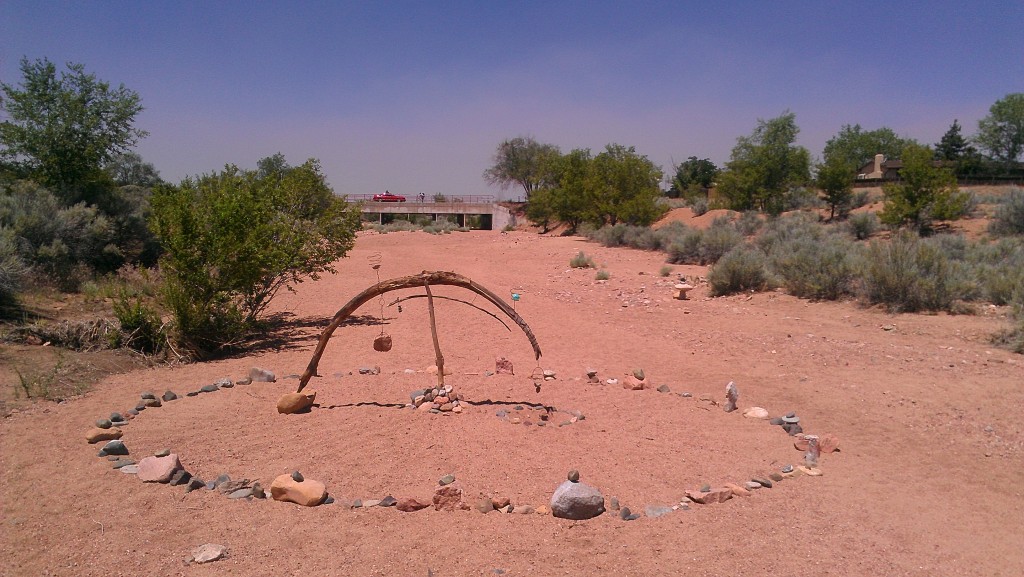 Your next water point is the Genoveva Chavez Community Center. You can’t miss it so no photo. It will loom upup on the left side of the arroyo in the distance with an enormous black roof like the Katrina Dome approximately 2 miles from where you entered the arroyo.
Your next water point is the Genoveva Chavez Community Center. You can’t miss it so no photo. It will loom upup on the left side of the arroyo in the distance with an enormous black roof like the Katrina Dome approximately 2 miles from where you entered the arroyo.
After topping off on water at the GCCC, look to your left as you pass the rodeo grounds just west of the GCCC. Listening Horse may be in session. Wave to Promise, Zorro, Doc, Jack, Gus and the rest of the gang—unless they are working in which case just go on by.
From GCCC to your final destination, the Santa Fe Brewery, you will have no official water points, but you will never be more than a half-mile* from civilization in the event that you do run out. It is recommended that each participant start the BAC with no less than four quarts of water on their person, making sure to top off at the GCCC for the final stretch to the Santa Fe Brewery, which is approximately 5 miles.
Continue to follow the riverbed as it veers south and moves through another culvert beneath Rodeo Road. Take frequent rest breaks in the frequent shady spots in the arroyo. (See picture below.)
After a couple miles you will be able to breathe more comfortably as the lizards, rocks, and cottonwoods replace the condominiums, shopping malls and carparks that line the arroyo.
From the culvert at General Miles Road, you will have only 4 miles to the Santa Fe Brewery. (General Miles, 1839-1925, is best known for quarreling with General Howard over who should be credited for the capture of Chief Joseph of the Nez Perce. Miles was an Indian killer like Custard. If you want, check out “Custard Battles” on the internet, a modern-day war profiteering mercenary security company that was prominent during my time in Iraq–named after Custard himself!
Continue on. Now, as you tire, you will be approaching Cerillos Road. Cross under Cerillos Road through the large culvert being careful not to step on any drunks. As conscience dictates, check to see if anyone needs help and to offer some of your water before continuing. But keep some.
Now that you have survived the Cerillos culvert, you are practically a veteran of the BAC. You only have one more culvert to navigate and less than 3 miles to go before you are rewarded for your efforts with a $2 beverage of your choice at the Santa Fe Brewery.
Don’t get turned around at this point. The culvert may have raised the hackles on your neck and you may have thought you were about to be ambushed. Regroup if necessary before walking the ¼ mile to the I-25 frontage road. This may be the hardest quarter mile of your life because this stretch of Cerillos is highly pedestrian-unfriendly. Take the I-25 frontage road heading south (not much better than Cerillos but an improvement). Do not walk on the shoulder of the frontage road. This is unsafe. Walk as far off the roadway as possible while still paralleling the road. Go 2 miles through the dirt, scrub and cactus trying to ignore the pandemonium of I-25 and the frontage road. If you can, pick up some bottles and trash in this area as you pass through. There is lots. Now you are getting close. Look to you left as you approach your last arroyo and last culvert. There it is. Proceed under I-25 to the promised land: the Santa Fe Brewers!
(IMPORTANT: Rather than cut across the landscape, follow the arroyo under I-25 to the roadway directly in front of you and then take the established dirt trail up to the left out of the arroyo and onto the paved road. This paved road, which is off-limits to motorized vehicles, leads in two directions. To the left is the brewery just yards away (see picture above), to the right: the 599 Railrunner Train station, also yards away. Depending on how you have managed your time, you will be able to enjoy $2 beverage of your choice at the brewery before making your way to the 599 Railrunner Station. Trains departing for Albuquerque leave at 4:34PM, 5:21PM, 5:49PM etc. Last train departs at 9:24PM. Consult train schedule for northbound trains if needed. My advice: Do not drink the Chicken Killer unless you plan on sleeping in the arroyo. For those destined for Albuquerque, a final brewery stop can be made at the Taproom, just around the corner from the train station on 2nd Street. Password: “Endgame” will get you a nice glass of cold water there courtesy of Gabe Alarid who used to ride his bike to Lamy and back from Santa Fe along the train tracks as a kid and fish in Cabresto Lake when it was still wild country.
GUIDELINES FOR CRAWLERS
- Obey all posted traffic signs and traffic lights. (None exist in the arroyo, hah.)
- Pack out all your trash and any trash you encounter if you have room in your pack.
- Try not to wear headphones or rely heavily on electronic devices. (You can’t get lost in the arroyo.)
- Use refillable containers for your water. Don’t buy water in throwaway containers for this event if you can avoid it. Use camelpacks, canteens, thermoses, old growlers, gallon milk jugs, etc.
- Walk in the center of the arroyo to avoid impacting the arroyo walls (which are collapsing in many places and likely to be “reinforced” with cement in our lifetime, just as the earthen dam at Cabresto Lake is getting concreted this year. Read about it here if you don’t believe it: http://www.taosnews.com/news/article_6374a30b-9bbb-5ba7-bc09-6b2666e8700e.html)
- DRINK LOTS OF WATER AND STOP FREQUENTLY IN THE SHADE THAT LINES THE ARROYO
- LISTEN TO THE STORY OF THE LAND SINGING OVER THE ROAR AND FUMES OF THE CITY
- Tell someone where you’re going or better yet travel with a buddy. If you don’t have anyone else to tell you’re going, tell me.
- Chicken Killer is ill-advised
- Donation to Listening Horse will get you a t-shirt at the last watering hole
- Roundtrip train fare from Albuquerque to Santa Fe and back is $7 for all day pass — so train and Santa Fe beverage for under $10
*approximately
Cheers and stay frosty out there!!!
Operation Skywalk June 2, 2012
Image
Mile 27 – Eyes full of beauty / feet full of pain
Preach the Gospel Always
REPRINTED FROM THE ALIBI
Chuck Hosking is an American marvel, as close to a homegrown prophet as you’re likely to come across. With his threadbare and patched clothes, riding around Albuquerque on a slipshod bicycle with a plastic bag seat, he remains happily committed to the true gospel.
For the last fifty years he has lived a life in defiance of our national character. Instead of being materialistic and acquisitive, he has pursued a life of minimalism and sharing. Instead of being xenophobic, he has sought to connect with other cultures. Instead of being strident and bellicose, he has pursued peace. Instead of embracing our addiction to television and computers, he has never owned either.
At the age of 14, he participated in his first Civil Rights march. It was Chicago, 1962. Groups of white detractors lined the route, taunting the marchers. He remembers the hatred in their faces. Instead of being cowed, he resolved to follow—truly follow—the compassionate teachings of his Christian upbringing.
His desire to better the world led to him to apply to the Episcopalian priesthood as a young man. At that time Vietnam was raging. When he expressed in his interview that the ministry should be at the forefront of the civil rights and anti-war movements, he was politely shown the door. This was the same time Martin Luther King was being ostracized by fellow clergy for speaking out against the war, enjoining the country to join together in protest: “If we do not act we shall surely be dragged down the long dark and shameful corridors of time reserved for those who possess power without compassion, might without morality, and strength without sight.”
The young Hosking chose action. He marched against the Vietnam War. He stood up and sat in for black student scholarships. When he received his draft card, he did not burn it. Instead, he tore it to pieces and sent the pieces to the draft board with his name and address. “I wanted them to understand my position in no uncertain terms. I was openly and adamantly non-compliant.” He began attending Quaker meetings. Several years later, in 1970, while teaching math at a Lower East Side alternative school in New York City, he met his life partner, Mary Ann Fiske. Married in 1971, they committed themselves to social justice and global equity.

Demonstrating in front of the Hosking residence in Southeast Albuquerque with one of Mary Ann's handpainted banners -Rebecca Belletto
After relocating to Albuquerque in 1982, Chuck and Mary Ann did everything possible to live their values of economy, conservation, love of others and sustainable living. For the next 25 years, until the death of Mary Ann in 2007, they subsisted contentedly on roughly $6000 a year, tending a robust garden, canning vegetables and practicing thrift. This was made possible in part by the purchase of their South Broadway home in 1984 for $20,000 in savings, which meant no mortgage. Any other income they earned over the years was donated to charitable organizations in developing countries. Given that their annual income remained below the taxable minimum, they have taken comfort in not funding war.
Chuck may be best known for the weekly vigils he has maintained at the gates of Kirtland Air Force Base dating back to Ash Wednesday, 1983. There, often alone, and buffeted by inclement weather, he has patiently held banners encouraging passing motorists to question their involvement with weapons research and development.
I am in awe of Chuck. Not only does he live his values, but he does so without arrogance, without narcissism, without spite, and without hostility.
For too many years I believed in the wrong religion and practiced the wrong faith. I believed in the religion of violence, the religion of superior firepower. I believed, narcissistically, we had the right to menace the world, spending half our tax dollars on weapons and weapons research and weapons training.
Now that I have a garden to tend, I am hopeful. Is not a soldier planting seeds a harbinger of peace?
Skywalker
I don’t like to walk long. I have walked long before and I know what it feels like. However, I also know something of the queer pride soldiers take in being able to take it like a mule. In the army we were always walking long as mules, and longer. I remember a walk in Ranger School that went through the deepest darkest depths of night completely without ceasing through endless clanking cursing darkest night up a mountain in Georgia where there weren’t supposed to be mountains like this that a person could spend the entire night climbing. The walks went on forever. We could never accomplish a night movement without someone spilling into a ravine or going off the edge of a precipice. On one movement I was the patrol leader and went off a 40-foot ravine. As it happened I landed in a shallow creek flat on my back. I came away uninjured. Just a little goofey. A full ruck and k-pot stuffed with all manner of army shit (huge sleeping bag for starters) cushioned my fall. That was 1998 before everyone was using night vision for everything. I walked away uninjured. Landed flat on my back in a creek. You couldn’t die wearing that army shit I thought. I bought into kevlar. That sweatliner followed me everywhere. The army issued me a new sweatliner every duty station having no idea mine was not being tossed away. At one point the k-pot design changed and they went to a different attachment system. I rued the day. At least that’s what I remember. But that wasn’t something disposable, that headband. You see. I sweat into that piece of leather like a mule.
When I think about walking long my entire physical being rebels against it. My re-made junctions creak and groan at the prospect. My head starts to ache just above the base of the back inside of the skull where I feel elevation.
I start to feel as though I am sliding down the mountain out of control from a missed step and will come away bleeding or worse. I have a great sense of being deterred from something repugnant. I guess that is what I want to demonstrate with each and every step I take along the rim of the sky with only a stick for protection. That I have come upon something utterly repugnant and am doing everything in my power to escape.
Listening Horse
http://www.facebook.com/ListeningHorse
Listening Horse is a free horse therapy program based in Santa Fe, New Mexico that helps wounded veterans and others reconnect with their spirit, their humanity, and their will to live. Listening Horse is the sole Professional Association of Therapeutic Horsemanship International (PATH Intl.) Equine Service for Heroes program currently active in New Mexico. Gus, director of Listening Horse and certified therapeutic riding instructor since 2003, recognizes that the most important aspects of the program are the horses, their connection to the participants, and program safety.
Promise, Zorro, Sugar, Doc, Concho and Socorro are the horses available in the program. Because of the unique philosophy of Listening Horse, the horses are allowed to exist in as natural a state as possible, which means they are not shoed, and for purposes of riding, a simple hackamore is used rather than a bit.
Listening Horse adheres to all the safety guidelines of PATH Intl., which include the use of helmets and the presence of a primary and assistant instructor at all times. Additionally, a former VA physician, Dr. Como, assists Listening Horse with monitoring and assessing the safety of participants as they progress through the program.
Wounded and struggling veterans and members of the public often rely on drugs (prescription or otherwise) and destructive behavior to manage their conditions and escape their pain and anguish. Listening Horse provides an alternative, known informally as the “Third Herd Way.” (The term “third herd” comes from the practice of military units referring to their third platoon as “third herd,” a term meant to evoke the sense of unity, trust, and acceptance often present in a platoon of close-knit soldiers.)
Typical animal therapy, including horse therapy, is intended to connect the participant with the mindset of the animal. A relaxed dog or relaxed horse can have immense benefits on those experiencing stress, trauma, and pain. But these are often short-term benefits, lasting only so long as the animal is near at hand.
By contrast, the “Third Herd Way” is dedicated towards achieving long-term healing. It does so by acknowledging that veterans and members of the public can work at creating lasting and durable bonds with horses so powerful that a transformation is possible: over time and with persistent cultivation of “mindfulness,” the veteran can gain acceptance into the herd, a vibrant and healthy reality grounded in the present moment and not in past trauma.
The “Third Herd Way” recognizes principles long understood by Native Peoples but largely overlooked in the Western world: that animals inhabit a world that has grown increasingly apart from our own, as we have become increasingly denatured through our modern lifestyles. For the “Third Herd Way” to work, the world of horses must be recognized as no less precious than our own, with their sense of reality just as viable as our own, etc.
Listening Horse is predicated on the belief that we can heal ourselves through persistently courting this beautiful and alternate dimension of the animal experience, which is grounded in the present moment. To this end, every veteran is expected to approach the horse on the horse’s terms. By doing so, the veteran begins to enter the reality of the horse and actively form a meaningful bond with them.
The experience of this bond may result in personal transformation. For some, it may be the first time they are assisted into the saddle of a horse they have bonded with, and realize the exhilaration of doing something they never thought possible.
For others, it may be the first time they ride bareback with the reins slack in the hands, and feel an absolute sense of oneness with the horse, grounded in the present moment and filled with trust. It is here in this dimension that lasting healing may occur.
To sign up for classes or for more information, go to www.listeninghorse.org
02JUN12, OPERATION SKYWALK
- Albuquerque, 02JUN12
- http://www.facebook.com/events/167223980074015/
- Operation Skywalk is a challenging march held the first Saturday of every June along the length of the Sandia Mountains of New Mexico near Albuquerque. Elevation ranges from a low of 6,377 feet at the Tunnel Springs trailhead in Placitas, where the march commences, to over 10,500 feet at the crest. The march concludes at the South Crest trailhead of Tijeras at around 6,700 feet. The combined gain and loss of elevation is over 10,000 feet. Approximate distance is 26 miles.
The closest approximation to Operation Skywalk is the Bata’an Memorial Death March (held annually since 1988 at the White Sands Missile Range near Las Cruces, New Mexico). The Bata’an Memorial Death March commemorates the sacrifice of thousands of Filipino and American POWs during WWII on the Bata’an Peninsula (pronounced BA-TA-AN). Due to rugged conditions, vicious treatment, and lack of food and water, approximately 5,000-10,000 Filipino fighters and 600-650 American fighters died on the march. Many were killed for attempting to escape or for being unable to keep up with the group. Many died of heat stroke. My father, 16 at the time, remembers Japanese guards slapping away water that villagers attempted to pass to the soldiers along the road.
Operation Skywalk commemorates the death of an American soldier, Colonel Ted Westhusing, who died at a secretive training facility in Iraq on June 5, 2005. Like our brothers in the Philippines, he could keep up physically and was highly trained, but he could not keep up with the desecration of his values. He could not keep pace with the indignity and dishonor he encountered while serving in Iraq. But in commemorating the life and death of one man, we commemorate many – for there are many of us “warriors with Westhusing.”
This year’s Skywalk will be held on Saturday, June 2, 2012. Participants are encouraged to depart the Tunnel Springs trailhead in Placitas (just past the community library and fire station turn right on Tunnel Springs Rd.) no later than 7:00AM in order to avoid finishing in the dark. The Ojo del Orno shortcut, although steep and rocky, is recommended. To take it, bear right up the large and obvious canyon some 100 feet from the trailhead. After a little under a mile, you will rejoin the Crest Trail. Make a right and continue climbing. Carry plenty of water to make it to the top (12 miles) where you will have opportunities to replenish your water at either the tram station or the Crest House. Average time for completion of the hike is between 12-14 hours. Make shuttle arrangements if you are unable to be dropped off in Placitas and must leave your vehicle. Keep in mind that temperatures at the crest can be as much as 30 degrees lower than at the trailhead when considering clothing.
Proceeds from Operation Skywalk will go to Listening Horse, a free horse therapy program in Santa Fe dedicated to the recovery of afflicted and recovering veterans.
A $20 donation will be solicited from those who are able to make it to the South Crest trailhead and complete the march before 8PM. Those who wish to contribute and who would like a t-shirt may choose one. Those who wish to contribute to Listening Horse but do not wish to participate in the march can do so by sending a check directly to: Listening Horse, 3237 Rodeo Road, Santa Fe, NM 87507. Those who complete the march after 8PM are encouraged to start earlier in subsequent years. Dogs are welcome but should be well-conditioned and well-watered. Booties are recommended for rocky sections of trail.
Private queries can be directed to myself at alimkin@hotmail.com. Public queries can be made in the comment section of this posting.
In memoriam.

- Col. Ted Westhusing with an Iraqi child
5 paragraph Operations Order for Operation Skywalk
Situation: normal – afu
Mission: traverse the crest
Execution: drive to tunnel springs in placitas. range south to south crest in tijeras.
Distance: 25+ miles
Terrain: varied
Concerns: the usual*
*the preceding is not a standard 5 paragraph operations order
but for Westhusing
Note: Operation Skywalk is not a pleasure stroll. It is a death march. If you don’t feel like a piece of you has died somewhere among those rugged peaks – among the screaming ravens and frost bent trees – among the shards of stone and shadow – all morphing to silence beneath a flailing sun – keep on.
Get Out Of My Rectum, Supreme Court
REPRINTED FROM THE ALIBI
During the time I served as a rifle platoon leader with the 5th Battalion 87th Infantry Regiment (Light) from 1998 to 1999, we had the distinction of being the only jungle battalion in the Army and the only infantry unit in the Army’s Southern Command. Oddly, although we were specialists in jungle warfare stationed in the Republic of Panama, our unit crest featured a ski pole, ice axe and snow-capped mountain. This was because prior to becoming the only jungle battalion in the Army, we were known for something else—being the only battalion trained in mountaineering, Alpine and Nordic skiing, and cold-weather survival. Because of this, our Latin motto was Vires Montesque Vincimus (We Conquer the Strength of the Mountains).
Once we moved to Panama, there was talk of changing the motto to “We Conquer the Strength of the Jungles,” until a bright E-4 volunteered that there was no word for jungle in Latin. After some discussion, the decision was made to just keep the motto the same—as well as the ski pole, ice axe and snow-capped mountain. The only thing that ended up changing was the translation of our Latin motto, which a field grade officer objected to as being obtuse. He proposed as an alternative: “We Conquer Power and Mountains.” As there were no Latin scholars among us to demur, and the E-4 had been sent to clean the latrine, his translation was adopted. This is known as the tyranny of rank.
Once established in Panama, our training consisted of rotations through J.O.T.C. (Jungle Operations Training Center), jungle and infantry training in general, and platoon exchanges with our Latin American counterparts in Argentina, Belize, Brazil, Bolivia, Chile, Colombia, Guatemala, Honduras, Paraguay, Peru and The Dominican Republic. During these exchanges, there was no shortage of inquiries about the ski pole, ice axe and snow-capped mountain on our crest, as well as our Latin motto. Since the Spanish-speaking soldiers of these various countries had never skied or used an ice axe, and were no more Latin scholars than we, some fun was had explaining our coat of arms (which included a single red horseshoe at the bottom for good measure!). Most of the explanations, not surprisingly, were lewd.
But all was not fun and games in the infantry. Before I was able to attend Airborne training—commonly known as jump school—I had to have a rectal exam. The rectal exam was standard procedure for those of us who wanted to become paratroopers, and consistent with the general unpleasantness that characterized life as a grunt. I mention this because at the time, back in the last millennium, a rectal exam was something unusual. This was prior to the recent 5-4 decision by our Supreme Court that all persons arrested can be subject to a rectal search even if authorities have no reason to suspect the presence of contraband.
It is my understanding that none of the current Justices have ever served as paratroopers, so it is likely none of them have undergone a rectal search. If they had personal experience with such a search, no matter how cursory, I think the majority would have reservations about ruling that such searches should be given the green light as a perfunctory matter.
For instance, if you get arrested for not wearing a seatbelt—rectal exam. If you get arrested for not having your dog on a leash—rectal exam. If you get arrested for unpaid parking tickets—rectal exam. If you get arrested for resisting arrest—double rectal exam. You get the picture.
Now, there may be some among us for whom this is not humiliating or intimidating, but I am not one of them.
Nor am I one of those people that buy the Justices’ explanation for their ruling.
“Correctional officials have a legitimate interest, indeed a responsibility, to ensure that jails are not made less secure by reason of what new detainees may carry in on their bodies,” Justice Kennedy wrote in the court’s decision, speaking for the majority.
Really? They’re motivated by concern over the health and welfare of other inmates? How compassionate of them. Still, I don’t buy it.
In fairness to the Supreme Court, four of the nine got it right. Justice Stephen G. Breyer, writing for the four dissenters (which included all the women on the bench: Justices Ginsberg, Sotomayor and Kagan) said rectal exams were “a serious affront to human dignity and to individual privacy” and should be used only when there was good reason to do so. Unfortunately for those of us with rectums, the dissenters in the Supreme Court don’t make law. They, like the rest of the American public, are just along for the ride.
If anyone warranted having their rectums searched for contraband, it was my platoon in Panama. They were a rowdy bunch and given to all manners of excess. But there wasn’t enough money in the U.S Treasury to compensate me for looking at the rectums of my soldiers, even if just in a friendly towel-snapping way, and not in the ugly authoritarian way the conservatives on the Supreme Court envision it.
Normally, given this decision, I would say that Justices Scalia, Thomas, Alito, Kennedy and Roberts should have their heads examined. But I also think, like any aspiring paratrooper, they should have other parts of their bodies examined as well.
My battalion is still looking for a lucky red horseshoe that went missing from the HHC building following a particularly rowdy deployment to Puerto Rico in February 1999—back when it was still considered un-American to have to stand and spread your ass cheeks for the government like an Abu Ghraib prisoner.
Tarlac, Tarlac
If a poem is not handmade
then what is?
The heart is present where
the hand is.
Everything that is
good and beautiful is
made by hand.
I discovered this
while building a door
with my father*.
*born 1925 in Tarlac, Tarlac



